Great Horned Owl Profile
It’s fairly well established that early animal explorers put a lot of attention into what their new discoveries tasted like, but when an 18th Century Naturalist gives a bird a name like Bubo virginianus, we may rightfully wonder what else these old-timey zoologists were using as a benchmark.
The Great horned owl does live up to it’s name.
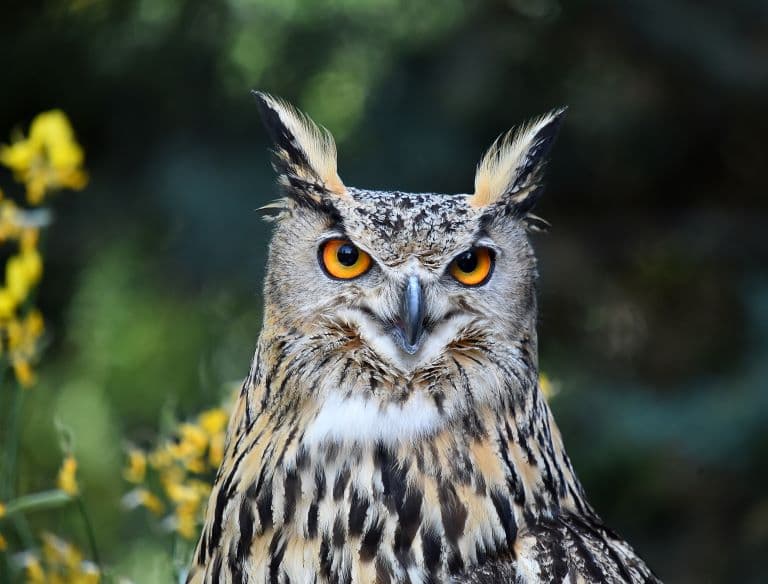
Great Horned Owl Facts Overview
| Habitat: | Forests, deserts, urban areas |
| Location: | North & South America |
| Lifespan: | Up to 29 in the wild, 50 in captivity |
| Size: | 63 cm (25 inches) in tall |
| Weight: | Up to 2.7 kg (6 lbs) |
| Colour: | Mottled brown, tufted “horns” on head |
| Diet: | Rodents, birds, mammals, reptiles |
| Predators: | Humans, larger owls, eagles |
| Top Speed: | Unknown, slow |
| No. of Species: | 1 |
| Conservation Status: | Least Concern (IUCN) |
They’re extremely widespread across the Americas, occupying varied habitats and exploiting a range of prey items. This adaptability is part of their epic success and long-lasting iconography in native cultures.
And they do all this with all the intelligence of a chocolate teapot.
They do seem to be interesting birds to get to know, and can show affection when young, but put a guinea pig in front of one and you’ll ruin it for weeks.
Interesting Great Horned Owl Facts
1. It wasn’t the German’s fault
Fredrich Gmelin originally identified this owl for science in 1788, but he called it Strix virginia, hopefully, named after the US state in which it was documented. This put it firmly in the genus of ‘earless’ owls like Gray and Tawny owls.
Then, along came a Frenchman, André Marie Constant Duméril, who, as you can tell, was destined from birth to get into taxonomy. In 1805, he invented the genus Bubo, into which this owl was placed, and where it remains to this day.
It’s hard to pinpoint when this owl gained its -anus, but it would have likely been some time after that.
2. They’re as sharp as a marble
This can’t be expressed enough, mostly because it’s very, very funny. Owls are several fries, a burger and a drink short of a happy meal. They’re at the bottom of their class. They’re as smart as a cardboard toothbrush. As fast as a herd of migrating dumplings.
The fact that they’re considered wise in human circles says more about the people making that connection than it does about the owls.
The trouble is, their eyeballs are so large and well-developed that they leave no space in the skull for any kind of cognitive wetware.
The American zoologist Paul Errington wrote an entire article on this species in 1932 (which is a pleasure to read), and concluded that it’s,
“Essentially a bird of low intelligence… effective nevertheless in enabling it to take care of itself generally, except when confronted by novel emergencies… it learns with difficulty proportional to the remoteness of the new experience from its regular life routine.”
He also notes a level of adaptability that likely benefits the species. 1
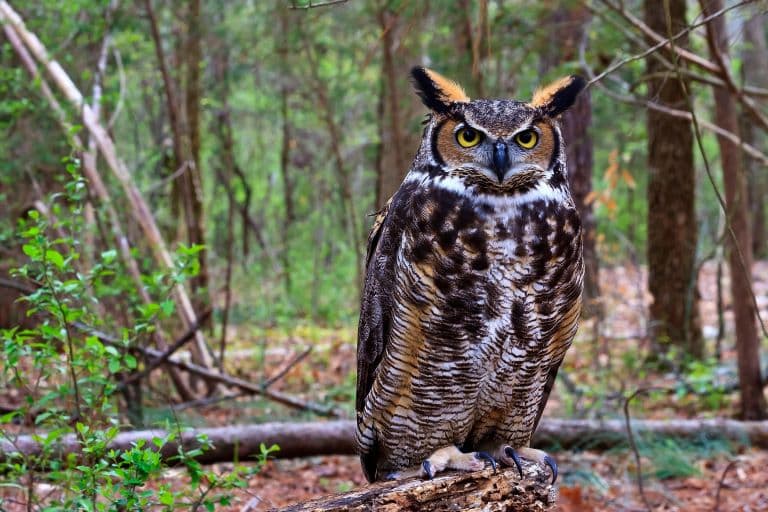
3. They’re moulded by their upbringing
This is hardly surprising, but the extent to which horned owls are affected by the way they’re reared is interesting.
This plasticity might explain why it’s so widespread and adaptable as a species and is described in the same article. Errington describes it as having the widest distribution of any true owl in the Americas.
In the wild, this bird eats more or less any mammal it can take, occupying a very similar niche to the much larger Eurasian eagle owl, Bubo bubo.
When hand-reared and fed on dead prey, they grew up relatively helpless, often refusing to hunt. One was handed a live sparrow, which it handled gently, looked it over, and released. Interestingly, their killing instinct appears to be significantly influenced by learning behaviour.
The juveniles are inquisitive though, and showed what could be described as affection to their handlers. Once they age, they seem to become more grumpy and proud, tolerating their handlers’ ‘liberties’ less and less.
Escaped, hand-reared horned owls seemed equally helpless. One landed in a field nearby and sat there “apparently bewildered” until the handler approached it when it came over to him on foot.
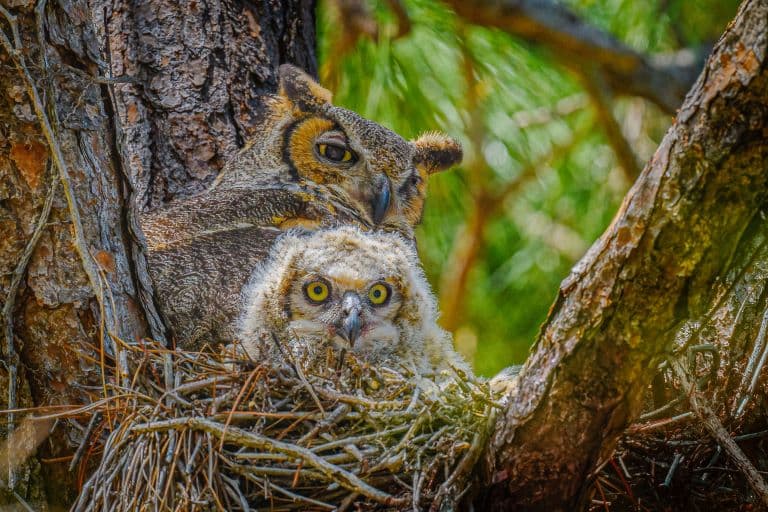
4. Guineapigs ruin their confidence
Errington described numerous attempts to train these birds to hunt.
“Sparrows were admitted into the cage of this bird when it had attained adult size; it made catches from the beginning, improving steadily in skill with practice. Live Norway rats were then tried, which the bird killed with ease”,
But when introduced to a guinea pig, the poor bird apparently reached its limit.
“The guinea pig, moreover, by frantic efforts to escape and possibly by its alien strangeness, frightened the owl into flying up and clinging to the wire of the cage top. For days the demoralized raptor would not attack even the rats which it had previously handled with facility”.
A small rabbit and some rats were despatched “a trifle crudely”, being torn to shreds on the first attempt, and the guineapig was introduced for a second time, with much the same outcome:
“As in the other case, the guinea pig incident ruined the confidence of this owl as a killer. Thereafter… it too was afraid of the rats”.
Despite the ridiculousness of such an idiot, this is a very successful species, and its enormous range and distinctive presence has imposed itself on various human cultures.
5. They’re a big part of human history
In some tribes in the US, the great horned owl is a symbol of strength, courage, and beauty (they didn’t have guinea pigs around them), and the Pima tribe say the owls are reincarnations of slain warriors. They would give dying members owl feathers to signify their readiness to die.
Cherokees believed the horned owls would communicate with their shamans in a quiet tongue, and could make sick those who had been led astray.
These owls were hunted for food by the Hare tribes and considered a delicacy by the Han. The Arikara and the Hopi used their feathers in ceremonial headdresses, the latter of which associated the bird with fertility and its calls with good crops. 2
6. They get in early
One of the ways this species is so successful is by timing their reproduction well. Great horned owls are some of the earliest-nesting birds in North America, which gives them time to get it right.
About a month before mating begins, they start hooting at one another. This is partly a flirtatious act, but in at least one researcher’s opinion, also a bit of a narcissistic one,
“At times the male appears to hoot for the mere pleasure of hearing his own voice, and the notes produced are an indescribable assemblage of hoots, chuckles, screeches. and squawks given so rapidly and disconnectedly that the effect is both startling and amusing”.
Hooting isn’t the only thing they begin early. Errington also noticed that the owls begin roosting next to nests long before it’s time to sit in them. Shortly before laying time, they were found inside the nest, suggesting they were well prepared for the event.
These owls select and occupy nesting sites months in advance, which is most likely an evolutionary advantage, but this try-hard behaviour does not go unnoticed by the other species in the community. 3
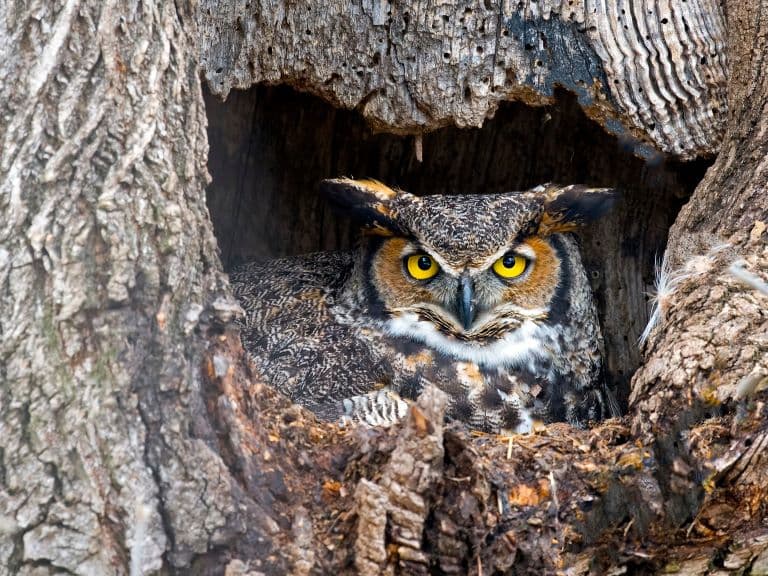
7. They’re bullied
Horned owls are one of the species of raptor known to be commonly attacked by other species of birds. It’s thought this is a response to a perceived threat and can involve multiple species and numerous individuals descending on the poor owl in a flurry of beaks and feathers.
Sometimes, a handful of birds of one species will start attacking the owl and, on hearing the ruckus, a mob of multiple species will form and join in the attack.
This might explain why the commotion from a flustered guinea pig is so traumatic to the owl. 4
9. They fly into buildings
Most non-natural deaths don’t occur from these attacks. Instead, the horned owls are primarily killed by human-related things.
Cars, powerlines, and other dangerous things kill many owls but even buildings prove to be difficult to navigate for this species.
They’re also occasionally shot and poisoned, but the species as a whole is thought to be stable and not a conservation issue. 5
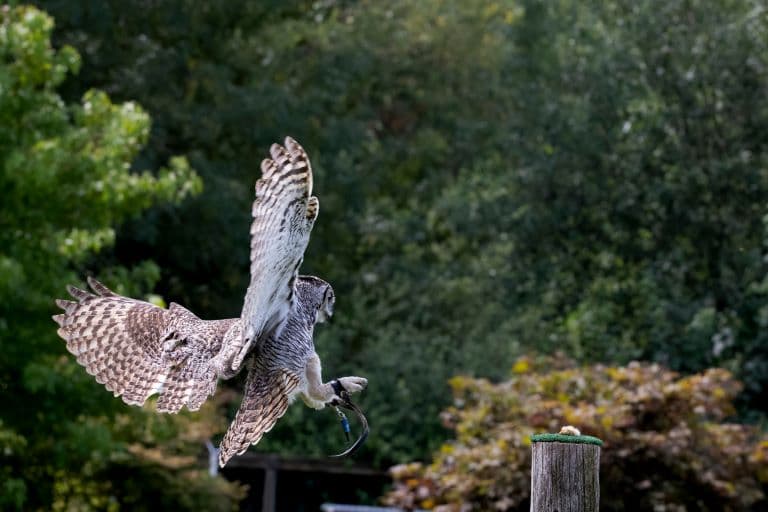
Great Horned Owl Fact-File Summary
Scientific Classification
| Kingdom: | Animalia |
| Phylum: | Chordata |
| Class: | Aves |
| Order: | Strigiformes |
| Family: | Strigidae |
| Genus: | Bubo |
| Species: | Virginianus |
Fact Sources & References
- PAUL L. ERRINGTON (1932), “STUDIES ON THE BEHAVIOR OF THE GREAT HORNED OWL”, Sora
- “Owls”, Traditional Animal Foods.
- FREDERICK M. BAUMGARTNER(1938), “COURTSHIP AND NESTING OF THE GREAT HORNED OWLS”, Sora.
- Stuart A. Altmann (1956), “Avian Mobbing Behavior and Predator Recognition”, Sci Hub.
- “Great Horned Owl”, The Peregrine Fund.
